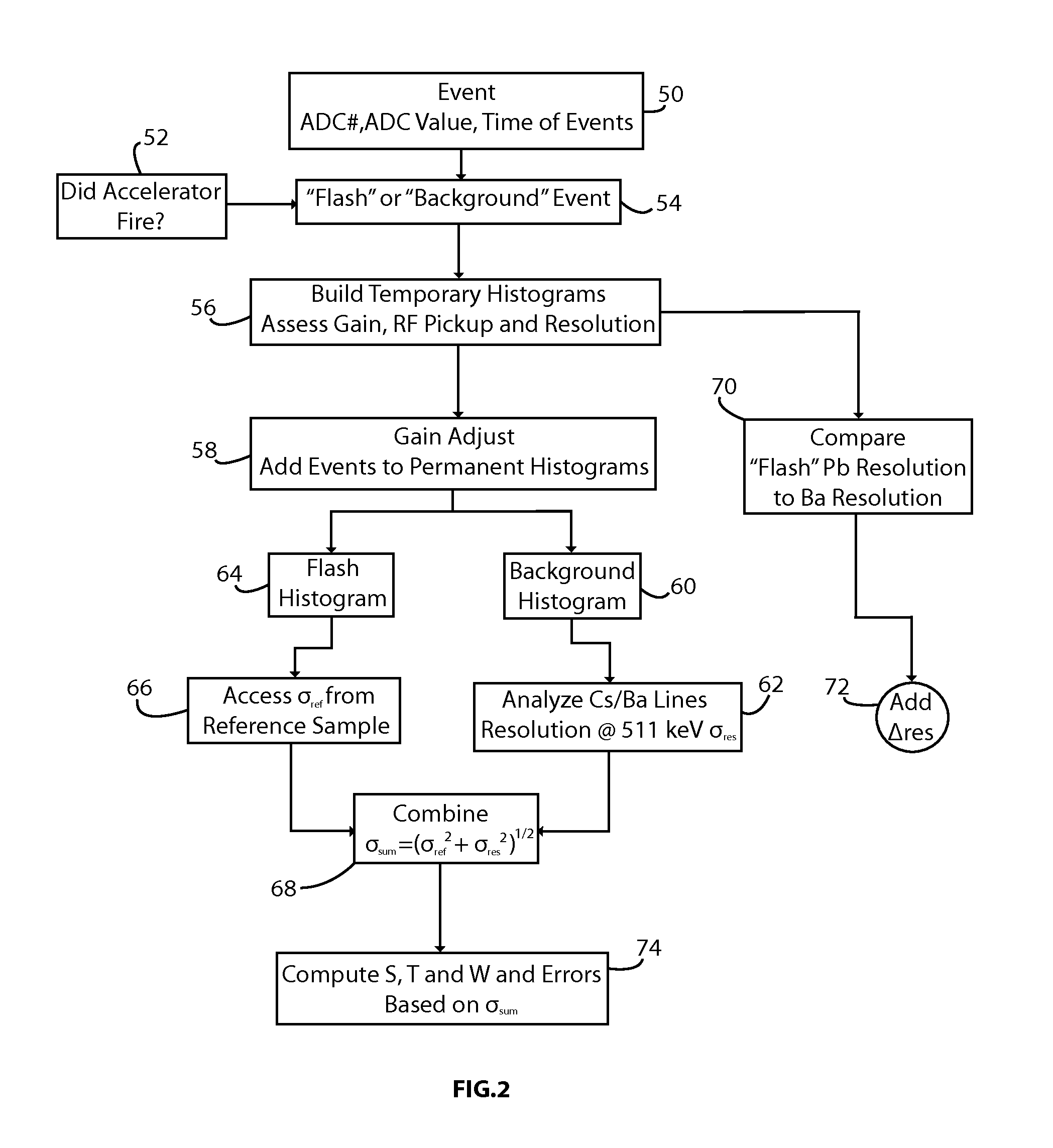System and Method For Imaging Defects
a technology of imaging defects and defects, applied in the direction of material analysis by secondary emission, material analysis using wave/particle radiation, instruments, etc., can solve the problems of high cost and complexity of obtaining positron beams, structural and industrial materials failure costs the u.s. economy approximately $100 billion per year, and the application of doppler broadening spectroscopy techniques to basic materials science with little commercial or industrial application
- Summary
- Abstract
- Description
- Claims
- Application Information
AI Technical Summary
Benefits of technology
Problems solved by technology
Method used
Image
Examples
Embodiment Construction
[0010]The invention enables one to analyze any material for defects deep within the material, whether a result of manufacturing defects, stress, or otherwise, and to image the defects in two and three dimensions. The invention can be applied to static or dynamic objects and materials, does not create radiation above regulatory restrictions, and is portable and highly configurable so that it can be applied in a wide variety of manufacturing environments and to virtually any object or structure, wherever it may be located. The device described herein can be used to analyze defects in objects and structures, large and small, of any construction or composition; crystal, metal, alloy, polymer, welded, bonded, cast or formed.
[0011]The invention creates positrons deep within materials with photo-nuclear methods. Several methodologies are employed to do this. The first involves the use of a bremsstrahlung beam with a maximum energy above the neutron emission thresholds to produce residual n...
PUM
| Property | Measurement | Unit |
|---|---|---|
| radiation energy | aaaaa | aaaaa |
| Doppler energy | aaaaa | aaaaa |
| atomic number | aaaaa | aaaaa |
Abstract
Description
Claims
Application Information
 Login to View More
Login to View More - R&D
- Intellectual Property
- Life Sciences
- Materials
- Tech Scout
- Unparalleled Data Quality
- Higher Quality Content
- 60% Fewer Hallucinations
Browse by: Latest US Patents, China's latest patents, Technical Efficacy Thesaurus, Application Domain, Technology Topic, Popular Technical Reports.
© 2025 PatSnap. All rights reserved.Legal|Privacy policy|Modern Slavery Act Transparency Statement|Sitemap|About US| Contact US: help@patsnap.com



